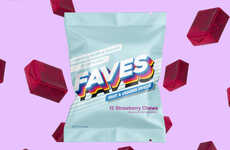
Tim Smyth's 'Defective Carrots' Shows Off Optically Deficient Veggies
Alyson Wyers — November 18, 2013 — Lifestyle
References: bemojake.eu & fastcodesign
'Defective Carrots' by Tim Smyth features photographs of malformed vegetables. The grotesque and strange shapes show carrots that were judged not good enough for consumer consumption. Typically these 'optically deficient' veggies end up in animal food troughs or as waste when they come off the conveyor belt. However, Smyth's work explores the cliche 'one man's trash is another man's treasure.' This book includes 56 different defective carrots that would otherwise never have seen the light of day.
The deformed carrots were deemed inedible by a scanning software called Focus, which looks for defects like fanging, scabbing and crookedness. These deformities often give the carrots the appearance of crossed legs, diseased digits and undersea urchins. Some even have an erotic quality to them.
The deformed carrots were deemed inedible by a scanning software called Focus, which looks for defects like fanging, scabbing and crookedness. These deformities often give the carrots the appearance of crossed legs, diseased digits and undersea urchins. Some even have an erotic quality to them.
Trend Themes
1. Increase in Upcycling of Food Waste - There is an opportunity for innovative solutions that repurpose visually imperfect vegetables into new products or ingredients.
2. Demand for Unique and Unconventional Food - Consumers are becoming more interested in trying unusual and visually distinctive food products, opening up space for innovative culinary experiences that feature imperfect vegetables.
3. Focus on Sustainable Agriculture and Food Production - There is a need for advancements in farming techniques and technologies that minimize food waste and maximize the utilization of all types of produce, including visually imperfect vegetables.
Industry Implications
1. Food Waste Management and Recycling - Companies specializing in food waste management can develop creative solutions for repurposing visually imperfect vegetables and reducing waste in the food supply chain.
2. Gourmet Food and Specialty Ingredients - Gourmet food producers can capitalize on the demand for unique and visually distinctive food products by incorporating visually imperfect vegetables into their offerings.
3. Agtech and Farming Innovations - Companies in the agriculture and farming industry can create technologies and techniques that improve the efficiency and sustainability of food production, including the processing and utilization of visually imperfect vegetables.
5.8
Score
Popularity
Activity
Freshness























